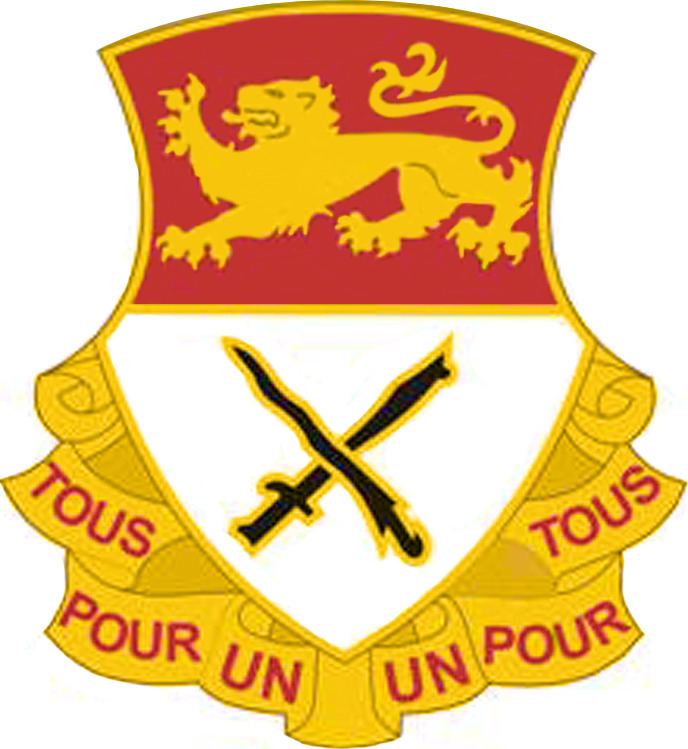Active 1901-211942-current Size Regiment | Country USA Type Regiment | |
 | ||
Role Cavalry One Station Unit Training | ||
The 15th Cavalry Regiment is a cavalry regiment of the United States Army. It was one of the Expansion Units originally established for the Spanish–American War, but has been a general workhorse unit ever since.
Contents
- Origins
- World War One
- World War Two
- Postwar the Constabulary Era
- Cold War
- Reorganization and current status
- 15th Cavalry Regiment
- HHT 15th Cavalry Group Mechanized
- 15th Cavalry Reconnaissance Squadron Mechanized less Troop E
- Troop E 15th Cavalry Reconnaissance Squadron Mechanized
- 17th Cavalry Reconnaissance Squadron Mechanized Less Company F
- Company F 17th Cavalry Reconnaissance Squadron Mechanized
- Consolidation
- Campaign participation credit
- Decorations
- Commanding officers
- References
Origins
The 15th Cavalry Regiment was formed in 1901 at the Presidio of San Francisco, California. Immediately upon its organization in 1901, the 15th Cavalry embarked for the Philippines to quell an insurrection in the United States' newly acquired territory. The regiment's next action was part of the Cuban Pacification from 1906 to 1909, followed by duty along the Mexican border and the hunt for Pancho Villa from December 1917 to March 1918.
World War One
When the United States entered World War I, the regiment sailed for France as one of the four mounted regiments on duty with the Allied Expeditionary Force. The fighting had already bogged down into trench warfare and the role of horse cavalry was nearly over. The 15th was called upon to dismount and relieve exhausted infantry units in the trenches. It was the tank that finally broke the trench lines to end both the war and the role of the horse soldier. The 15th served occupation duty after the war until June 1919 when it returned to the United States.
Sadly after 20 years of continuous active service, the regiment was deactivated on 18 October 1921 as part of the massive cutbacks in the Regular Army following the "war to end all wars".
World War Two
With the advent of the Second World War, the 15th was again called to service in March 1942, this time with new mounts, the armored car and tank. After undergoing training at the Desert Training Center in California, the regiment sailed for the European Theater of Operations, arriving in Scotland in March 1944. Here, the 15th was reorganized as the 15th Cavalry Group (Mechanized). The group was composed of the 15th and 17th Reconnaissance Squadrons. The 15th Cavalry Group landed on Utah Beach on 5 July 1944 as part of Patton's Third Army. The 15th served in four major campaigns in Europe: Normandy, Northern France, Rhineland, and Central Europe. The 15th Cavalry Group and its two squadrons fought as part of the Third Army, Ninth Army and was later assigned as a security force for several different divisions. The end of the war found the 15th deep inside Germany, covering over 1000 miles of enemy held territory since landing on the Continent began in June 1944. When the war ended, the 15th Cavalry Group and its two squadrons had taken nearly 7,000 German prisoners and had destroyed 78 guns and 495 enemy vehicles.
Postwar - the Constabulary Era
Following the war, the 15th was redesignated the 15th Constabulary Regiment, charged initially with occupation duty of the defeated Germany. The 17th Reconnaissance Squadron was deactivated in January 1947, but the 15th Squadron, redesignated as the 15th Constabulary Squadron, continued serving. As the cold war began in earnest, the regiment's duty shifted to patrolling the border between West Germany and East Germany, as well as the border with Czechoslovakia. The Constabulary Force guarded the border until 1952.
Cold War
From 1952 to 1987, the regiment went through a series of redesignations, inactivations and reactivations. Elements of the regiment served across the Army from Korea, Germany, and the United States. Troop G served in Viet Nam from 1971 to 1972, being equipped at the time with M551 "Sheridan" Armored Airborne Reconnaissance Assault Vehicle (AARAV).
Reorganization and current status
In March 1987, the Army overhauled its Combat Arms Regimental System (CARS) to restore some order to the history and lineage of its regiments. One goal of this reform was to keep on active duty those regiments which had earned distinguished records over long years of service. The 15th Cavalry clearly deserved such recognition and in March 1987, the 15th Cavalry Regiment was reactivated at Fort Knox, Kentucky, by the activation of its 5th Squadron. The Squadron, as part of the 194th Armored Training Brigade, was charged with the mission of training the U.S. Army's MOS 19D enlisted cavalry scouts.
15th Cavalry Regiment
HHT, 15th Cavalry Group, Mechanized
15th Cavalry Reconnaissance Squadron, Mechanized (less Troop E)
Troop E, 15th Cavalry Reconnaissance Squadron, Mechanized
17th Cavalry Reconnaissance Squadron, Mechanized (Less Company F)
Portions of the 17th's movements are dramatized in the book, "Teacher of the Year: The Mystery and Legacy of Edwin Barlow".
Company F, 17th Cavalry Reconnaissance Squadron, Mechanized
Consolidation
Campaign participation credit
- Mindanao;
- Luzon 1902
- Streamer without inscription
- Normandy;
- Northern France;
- Rhineland;
- Central Europe
- Consolidation II (Troop G only).
Decorations
Commanding officers
(Inactivated October 1921, reactivated March 1942)
(Redesignated March 1944 as 15th Cavalry Group, Mechanized)
(Redesignated May 1946 as 15th Constabulary Regiment)
(Inactivated December 1948, reactivated November 1950 as 15th Armored Cavalry Group, Mechanized)
(Redesignated September 1953 as 15th Armor Group)
(15th Armor Group Inactivated December 1955, incorporated into the Combat Arms Regimental System 1957, regimental headquarters disbanded.)
